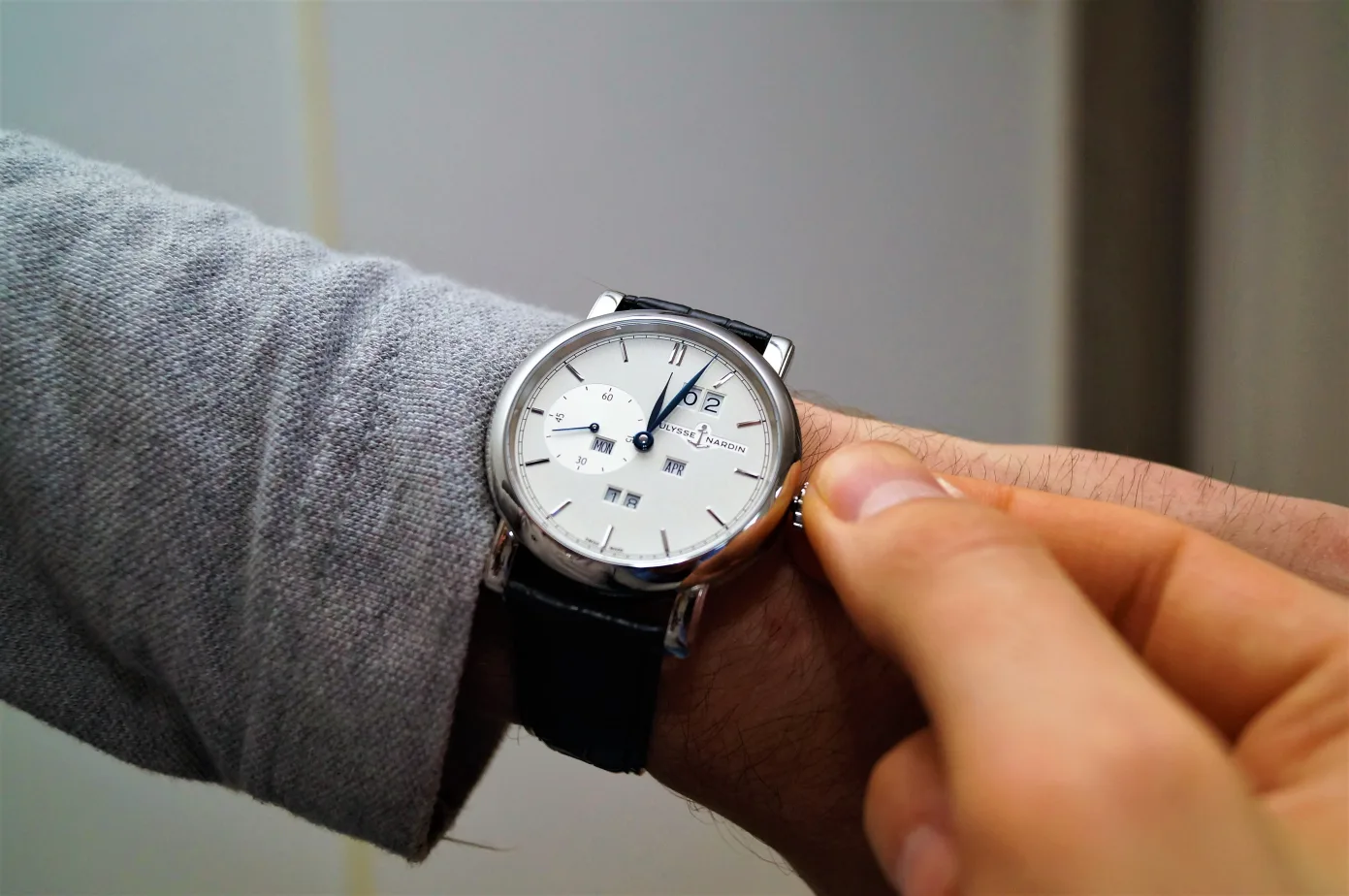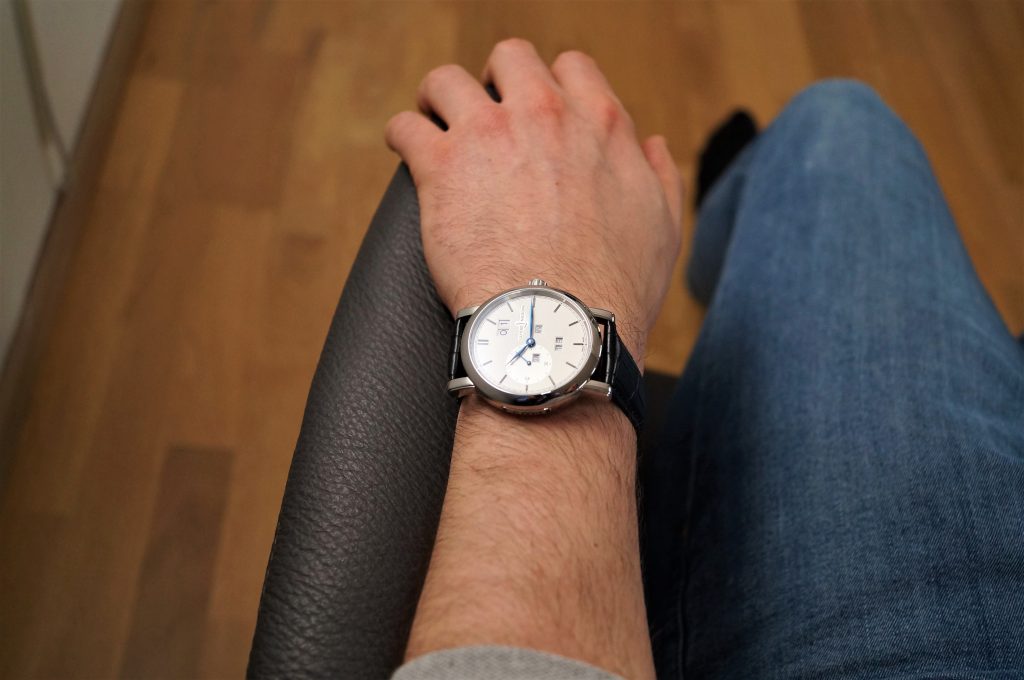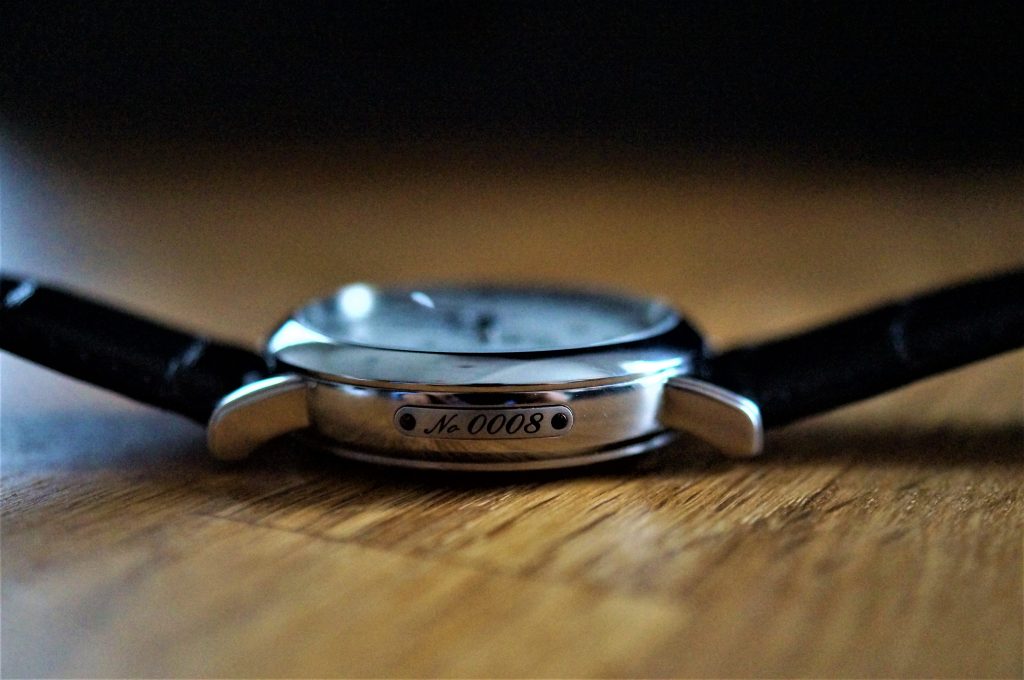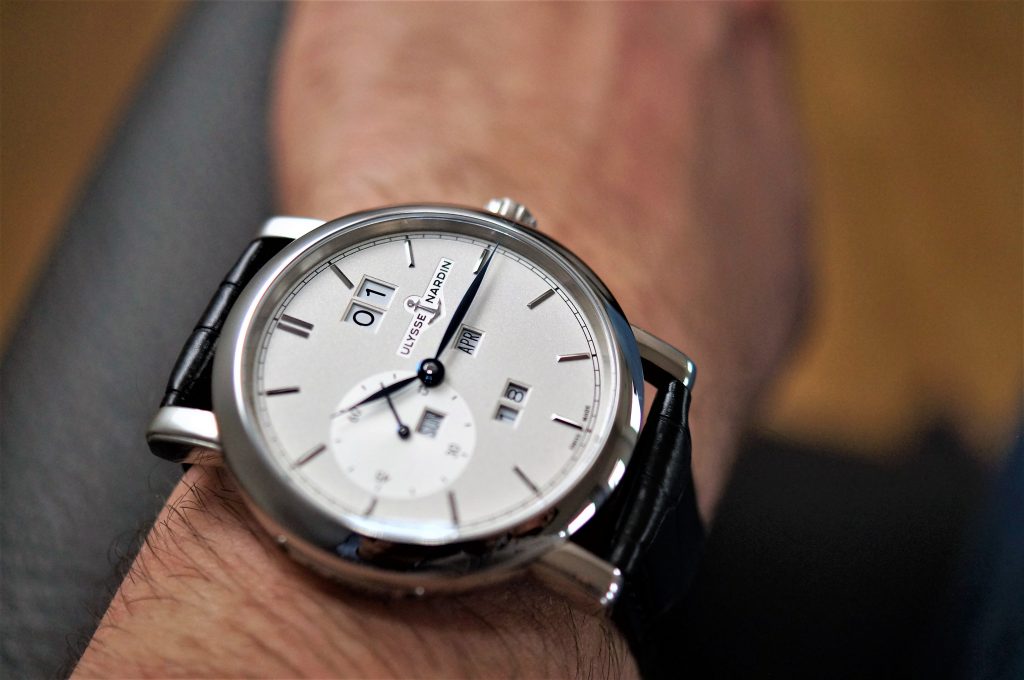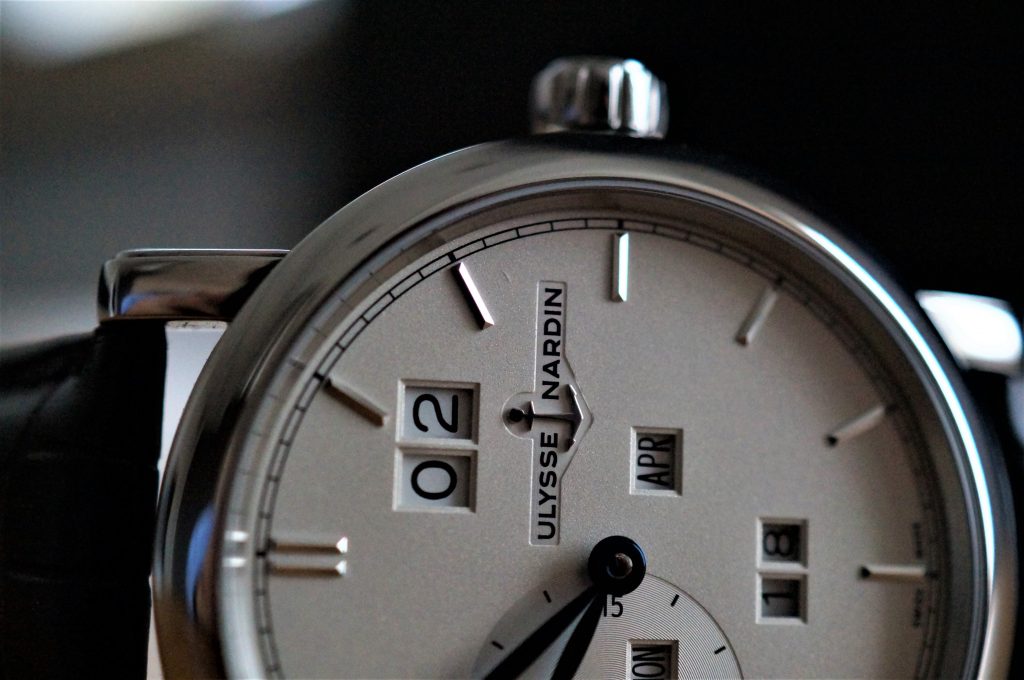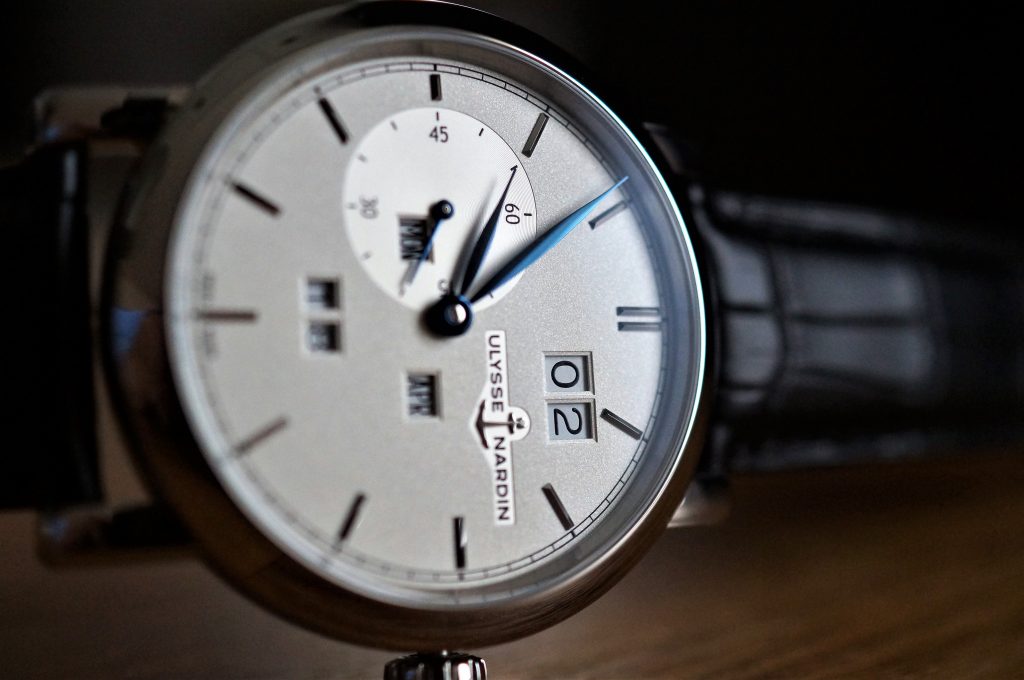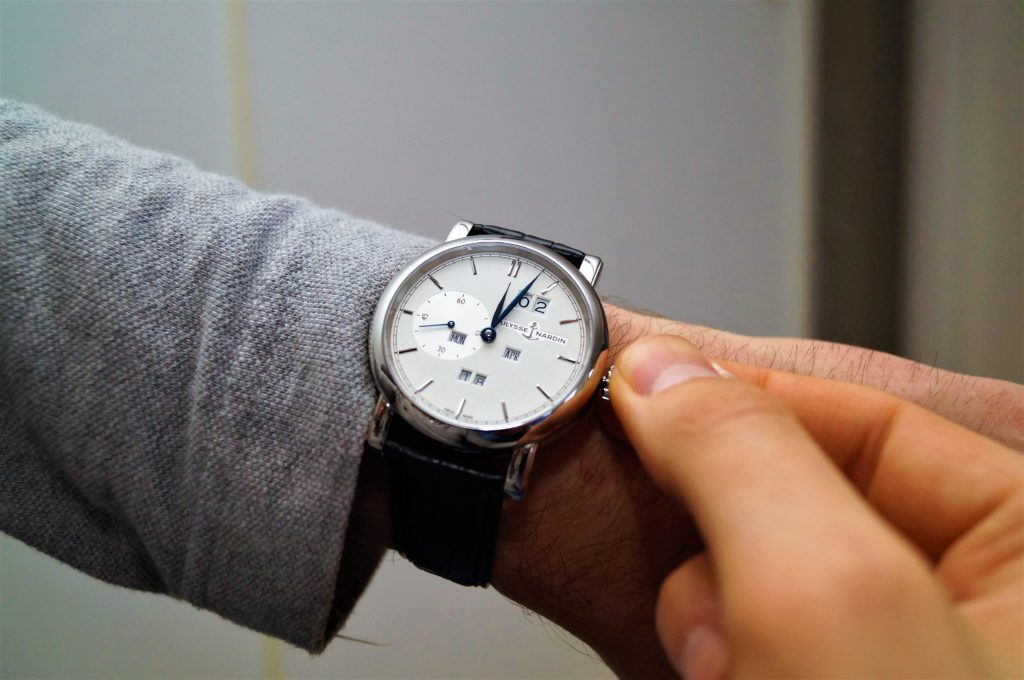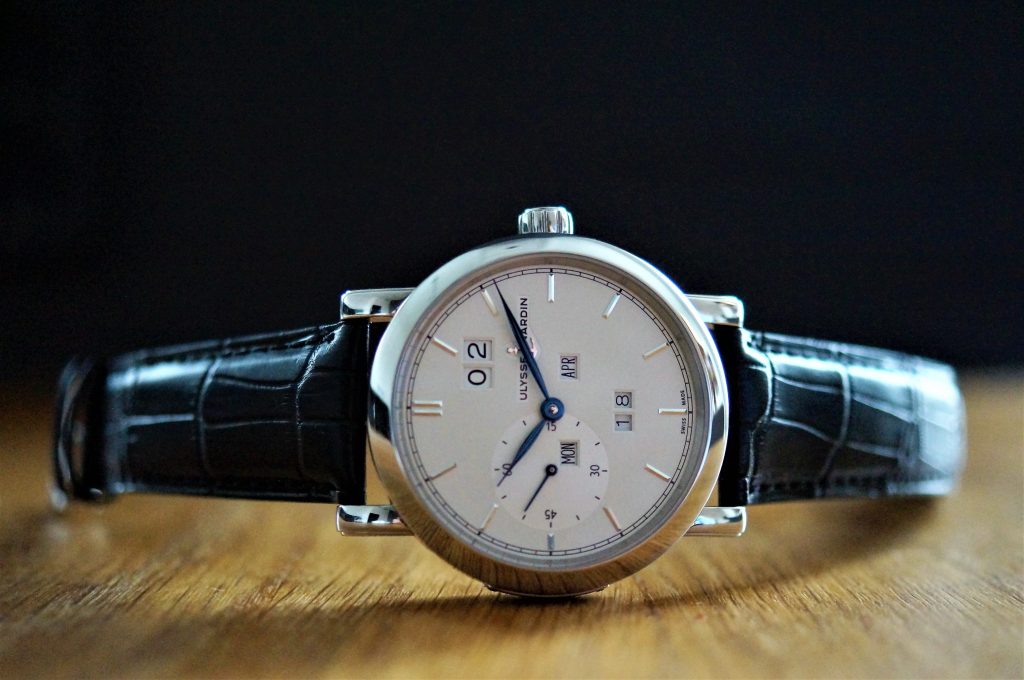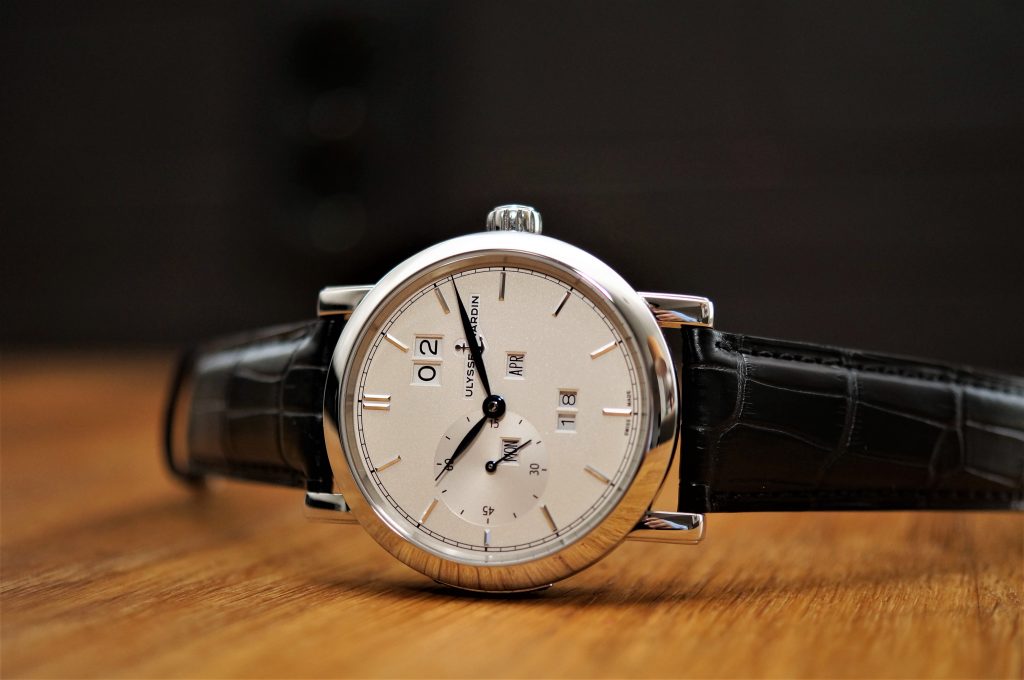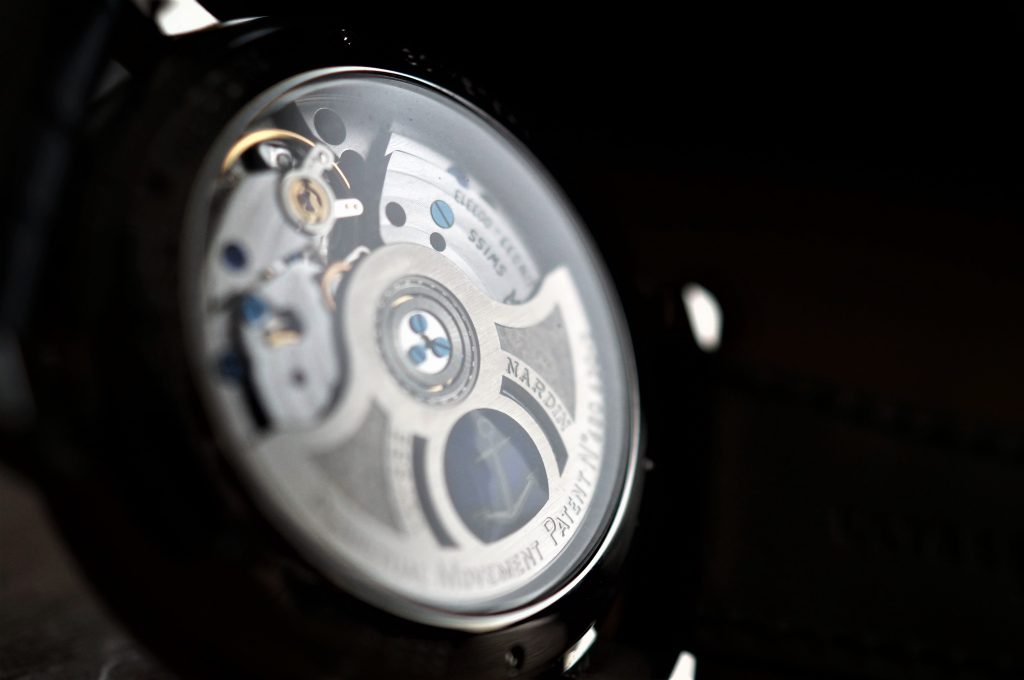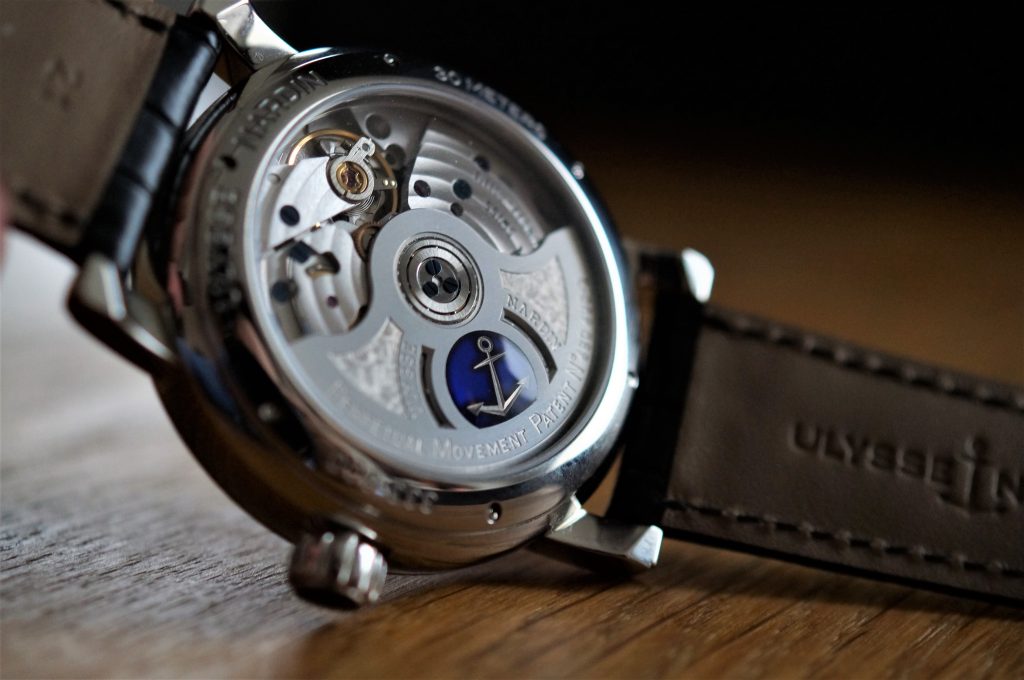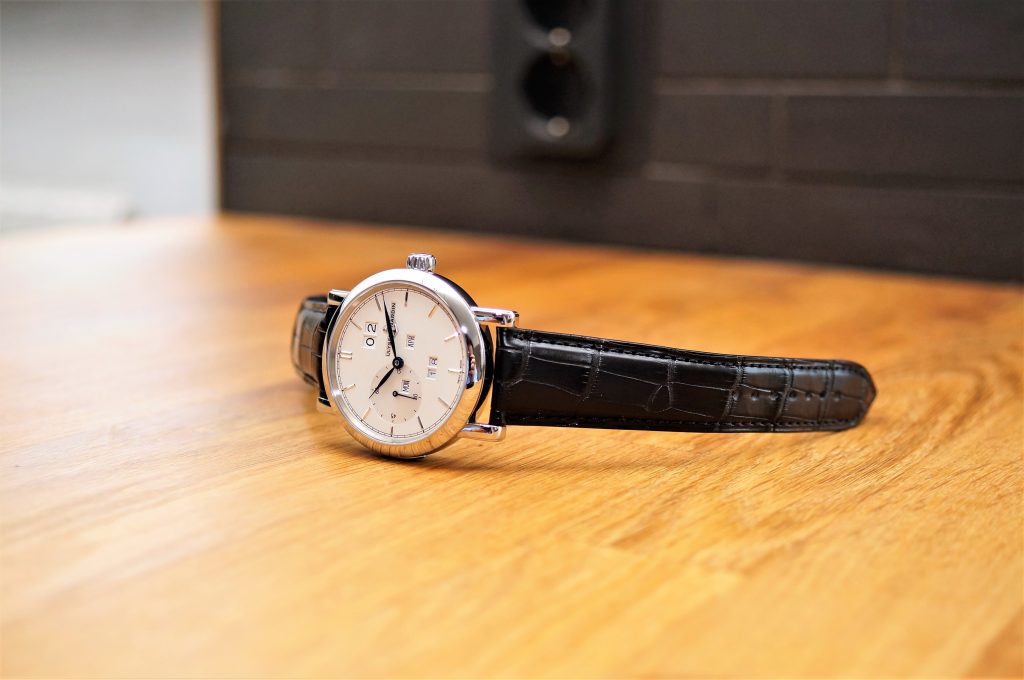By Jovan K
First launched in 1996, the Ulysse Nardin Classic Perpetual Ludwig commemorated its 150th anniversary with a 2017 version. The classic model from 1996 was created by Ludwig Oeschlin for the late Rolf Schnyder, the owner of Ulysse Nardin then. It marked the beginning for strong innovations for the brand, a turning point when it comes to a Perpetual Calendar complication. And so, the watch gained a name after Ludwig Oechslin, its maker otherwise known in horology world as Ulysse Nardin’s ‘Master Innovator’. The 1996 Ulysse Nardin Classic Perpetual Ludwig also used the legacy movement that the 2017 model is using, the Ulysse Nardin Calibre 33 based on an automatic movement supplied by Nouvelle Lemania(Breguet). This powerful movement allowed the brand to cram complications on top of each other without affecting its reliability and accuracy. So now you know the legend, and I am quite excited to share to you my 2 week experience with this amazing watch, I liked it a lot although the noisy rotor is quite annoying and a deployment buckle would have been very nice.
A bit of trivia, the Ulysse Nardin Classic Perpetual Ludwig offered groundbreaking advances in perpetual calendars which many enthusiasts are now after. The watch is so awesome and so innovative that the adjustment of all indications is done by merely twisting the crown, sounds impressive, I know that is why I was so impressed with it for 2 weeks.
It may be a complicated watch, but Ludwig Oechslin, a Master Watchmaker no doubt managed to simplify the complicated. Think about the complexity of paying your taxes, the calculations and whatnots, what if, there is a single solution that allows you to just drop your paycheck and everything is done. Now let us think about complicated watches, they are impossible to simplify at least for a novice watchmaker, but not for a Master Watchmaker. And the man was ahead of the game creating the very first Ulysse Nardin’s first perpetual calendar back in 1996. And the awesome fact is that the very same movement still powers what we have now, or what I used for 2 weeks. This is a timepiece with highly refined complication, simplified down to the very basic by keeping only the essential parts and letting go of the extraneous parts.
So the new model of the Classic Perpetual Ludwig pretty much pays tribute to Mr Oechslin. This über-complex perpetual calendar complication appears comparatively simple to use, so I tip my hat to the man too.
With this watch, the caseband is hyper clean. I say this because, when compared with most perpetual calendars, there are no correctors to be found on the caseband of this 2017 timepiece. All the adjustments are done using the crown alone, very impressive, believe it or not. Moreover, I like the built-in protection for the movement, so I can basically adjust the large date display forwards and backwards without worrying too much about its effect on the movement. Although I would say, I am an old school watch guy so I take great care when I adjust any settings on any watch.
Now moving on to the dial, I like the ‘silverized’ look, kind of soft or in simpler terms, elegant. Normally, we see a lot of clutter with complicated watches but not on this watch. The clean dial of the Classic Perpetual Ludwig should be an exemplar for Perpetual Calendar watches. I also like the blued leaf-shaped hands for the hours and minutes and they are very easy to read. Meanwhile, slender, faceted batons denote the hours with precision, teeny tiny at first glance, but you will get use to it.
The large date display resides at 1 o’clock with a proper frame or apertures for each digit, I like this idea as it gives some kind of focus or it draws the eyes to the date. And just beneath a horizontal axis from the 3 o’clock to 9 o’clock are two more apertures for the day and month. The year is also displayed in two digits using stepped apertures. Maybe you will think, what an “overdone” design, well it may or may not but in the end, beauty is in the eye of the beholder, and as for me, I like it.
Moreover, the small seconds display is at 9 o’clock featuring a snailed blued hand. The overall contrast is good for the eyes. Surrounding the dial is a chemin de fer(“railroad”) making the reading of minutes so much easier.
I like how the dial is both practical and elegant. The array of indications clearly show that this is a complicated watch but I don’t find the dial cluttered at all. The legibility is so good that you would want to stare at it the whole time. Most elegant watches combine blue hands and silver dial for its clean look and for this watch, I can only agree so much.
The Classic Perpetual Ludwig features a stainless steel case. Now I know you might say, what, no rare metals, well the brand has a reason for doing this. By adopting this approach, Ulysse Nardin can compete better with the lot, and the final offer for this timepiece is a reasonable €19,800. Personally, I do not care at all and I love the muscular tone of steel. Besides, a silver dial against a steel case is a perfect combination, at least for me.
Another important aspect of this perpetual calendar is its dressy dimensions, comparatively modest in a sense. Most watches, if not all, with the same complication are larger. At a mere 41 mm in diameter, the Classic Perpetual Ludwig can pretty much fit a broad array of different wrist sizes.
I also like how the case-band arcs inside just adjacent the case-back. This heightens the beauty of the watch. The elongated lugs also make the watch appear larger but in any ways it really boosts the dimensions of the watch.
The subtle knurling of the crown protects it from accidental abrasions which may happen considering it is made of steel. Even with this design, the crown remains easy to hold. I like the cool Ulysse Nardin emblem at the vertical flank of the crown, you would not mistake it for any brand at all. Of course, you would not miss this watch for anything because adjacent to 9 o’clock is a plaque that specifies the individual serial number of the watch. More importantly, the exhibition case back shows abundant views of the self-winding movement inside. Moreover, the understated steel case really suits this watch because of its very unassuming nature that exemplifies refinement and style.
Powering the Classic Perpetual Ludwig is the Caliber UN–33, a self-winding movement. It is a true epitome of Ulysse Nardin’s talented New Product Development Department and as previously stated, this is a very easy way to maintain movement allowing the wearer to perform adjustments to multiple indications with the crown alone. I actually started thinking, why do some brands still insist on using case back correctors and corrector tools, perhaps for the money or they have not figured it out just yet, I lean on the former though.
The movement is lovely, highly decorated with circular Côtes de Genève motif. There are also numerous blue screws along the bridges and the oscillating mass features UN’s logo in blue. There are 34 jewels in the movement and the power reserve maxes out at 48 hours but still, this is very impressive considering the complications involved.
In my experience, the Classic Perpetual Ludwig delivers uber complexity in an easy to use package. I happen to like the missing correctors and correction tools to adjust the indications which is an indication of a legendary master watchmaker. Usually, we often question the reliability of this set-up but in my use, it is pretty much nil, absent. The watch is super accurate with a no-fuss self-winding movement.
The clean dial really stands out despite a number of indications. The Classic Perpetual Ludwig also delivers legibility with precision. I love blue against soft silver and the steel bezel, just plain thoughtful. For those with strong inclination to steel watches, for sure you will love wearing the Classic Perpetual Ludwig. Moreover, if there is one more thing to love about steel watches, is the price.
Finally, the leather strap with a pin buckle really is on the cheap side, I would have loved a deployment buckle instead. Anyhow, with a number of cool things this watch has, I would not care too much about my complaints like the noisy rotor too. The reasonable price of € 19,800 Euro is perhaps the watch’s greatest selling point discounting the fact that it pays a nice homage to the 1996 original model. Certainly, it is a milestone when it comes to mechanical watchmaking. Adjusting the calendar indications forward or backwards via a single crown is one heck of a breakthrough. For more info, visit Ulysse Nardin online.

